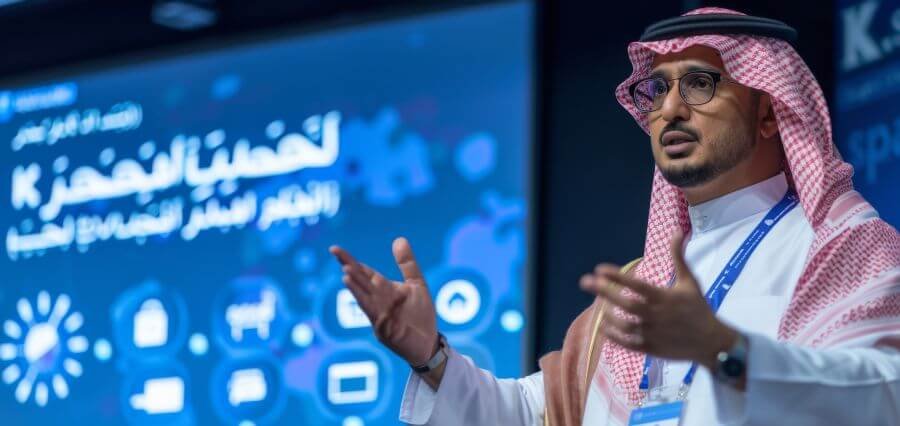The educational world is changing at a dizzying pace and in ways heretofore unimaginable, and nowhere is this more pronounced than in the Middle East. Over the last few years, the Middle East has experienced an explosion of interest, investment, and energy into redesigning education delivery, access, and consumption. This educational wave, or Education Innovation in Middle East, is not merely a matter of implementing new technologies—it is a matter of changing the very educational philosophy in order to respond to the needs of the 21st century.
A Shift in Educational Priorities
Middle Eastern education systems have historically been more conservative, emphasizing rote memory, classroom instruction, and testing. As economies become diversified and digitalization occurs at an accelerated pace, the Middle East is increasingly taking a more holistic and forward-looking strategy for learning. The drive for Education Innovation in Middle East is a part of an even larger agenda to hone critical thinking, creativity, and problem-solving from early childhood.
Governments everywhere in the region—most notably in the UAE, Saudi Arabia, and Qatar—are attempting to overhaul curricula, create innovation centers, and invest in education technology (EdTech) platforms. Why? To get their youth ready for an emerging world with roots in regional and cultural identity.
The Rise of EdTech
The hypergrowth in EdTech is one of the powerful drivers of “Middle East Education Innovation.” Online learning platforms, interactive software, AI-based instructors, and gamified learning environments are being woven into the fabric of classrooms across the region. Not only are they increasing engagement and personalization, but they are also making it possible to continue learning outside the classroom walls—something particularly essential in the COVID-19 pandemic.
Initiatives such as UAE’s Smart Learning Program and Saudi Arabia’s Tatweer project are good examples of how technology is being made use of to enhance learning outcomes. Under these programs, students can access interactive content, virtual labs, and instant feedback, which makes the process of learning more enriched and effective.
Culturally Relevant Curriculum
While innovation generally involves a Western template, Education Innovation in Middle East is going down an alternative path. The Middle East is poised to develop models of education that compete not only at the international level but with the dynamics of indigenous culture as well. Arabic documentation, Islamic courses, and area history are being folded into STEM, computer science, and digital literacy to produce well-rounded students.
Schools increasingly have bilingual or multilingual teaching, embracing diversity and maintaining the unbroken heritage connection of students. The interplay between creative pedagogy and cultural appropriateness is a defining feature of the region’s forward-thinking education agenda.
Empowering Teachers
Teachers are the key drivers of Education Innovation in Middle East. Appreciating this, education ministries and institutions are spending big bucks on teacher training, leadership, and professional growth. Teachers are being equipped to operate on digital platforms, adopt student-centred pedagogical practices, and cater to different learning needs.
Furthermore, most nations are partnering with universities and global education associations to import the world’s best practices to learn in classrooms, and exporting their own examples to other parts of the world.
Inclusive and Accessible Learning
One of the most hopeful areas in Education Innovation in Middle East is its inclusiveness. Initiatives to connect urban and rural students, provide quality education to girls, disabled students, and poor communities are being introduced. Mobile classrooms, satellite campuses, and virtual learning environments are being launched to reach out to distant students.
The added emphasis on adaptive technologies and personalized learning also means that learning students with varying capacities are now able to be provided with differential support so they are able to thrive both academically and socially.
Working with the Private Sector
Private corporations and start-ups are paving the way in speeding up Education Innovation in Middle East. Ranging from AI-powered tutoring apps to learning robotics, the private sector is bringing agility, innovation, and market-based solutions into the education arena. Governments are facilitating this nexus with grants, innovation labs, and open regulatory frameworks to encourage experimentation.
Partnerships with institutions all over the world like MIT, Oxford, and Google for Education are also contributing towards building a strong innovation ecosystem in education.
Looking Ahead
As the Middle East aims to be a knowledge and innovation hub of the world, its education revolution will play a key role in taking sustainable long-term development forward. Education Innovation in Middle East is not merely a trend but a movement. It signifies a deep transformation of societies in what they believe about learning, talent development, and futures of work.
From intelligent classrooms and AI-powered learning to culturally responsive curricula and empowered teachers, the region is designing a daring blueprint for others. In doing so, it is making sure that generations to come are not just educated and trained but also motivated and resilient.
Read More – Middle East Tourism Growth 2025: Drivers & Future Opportunities.





